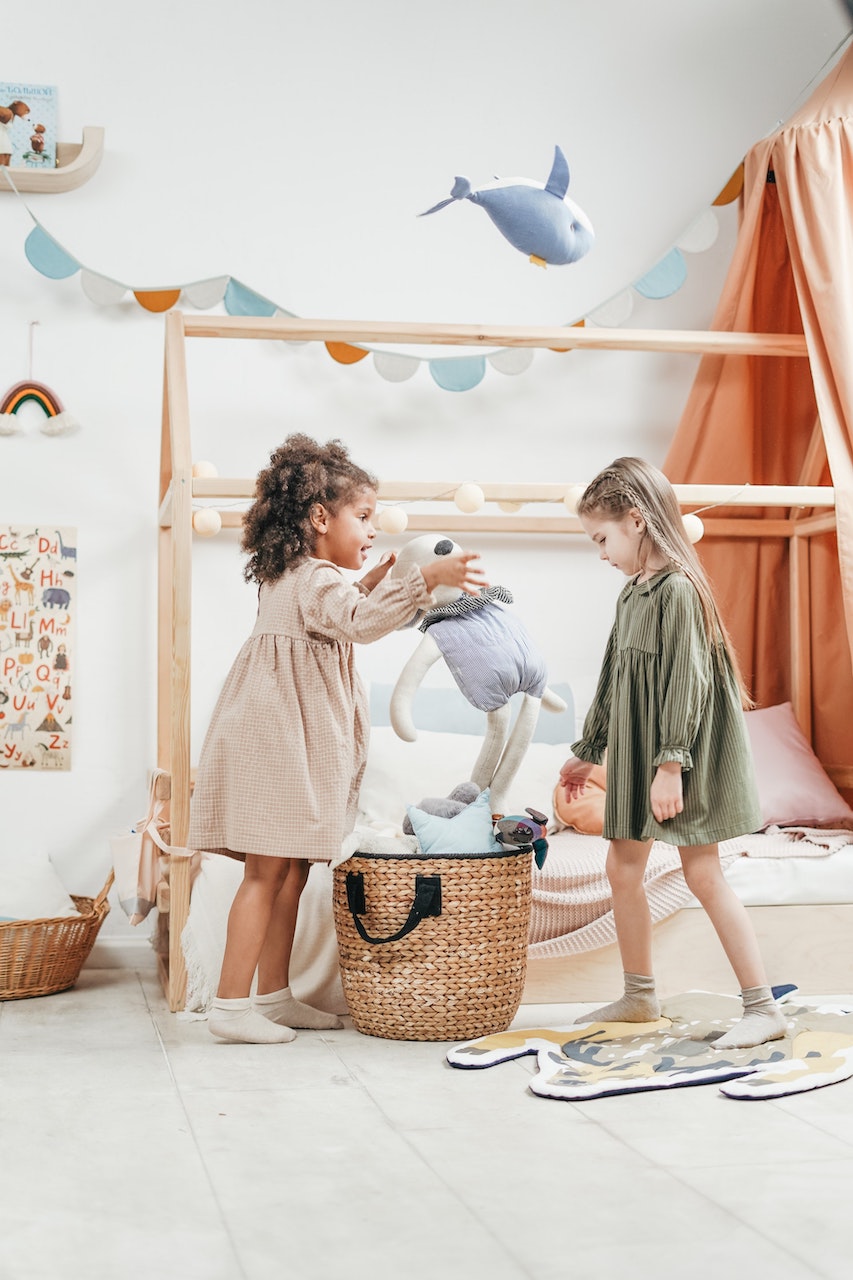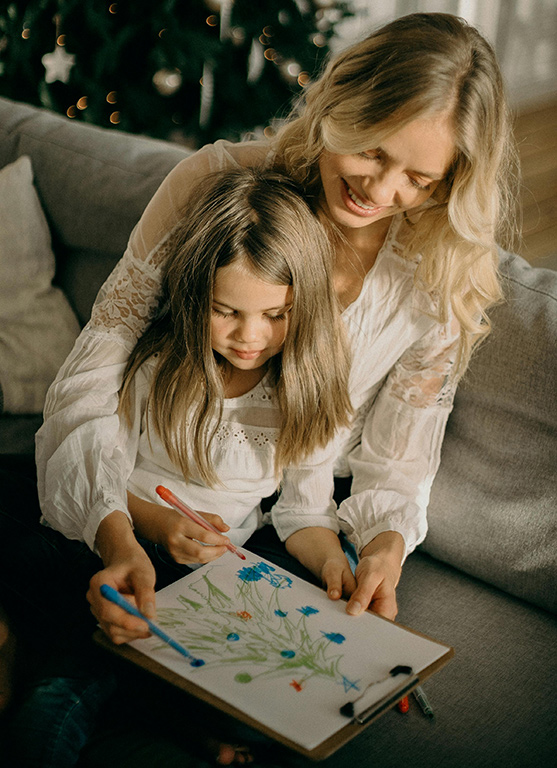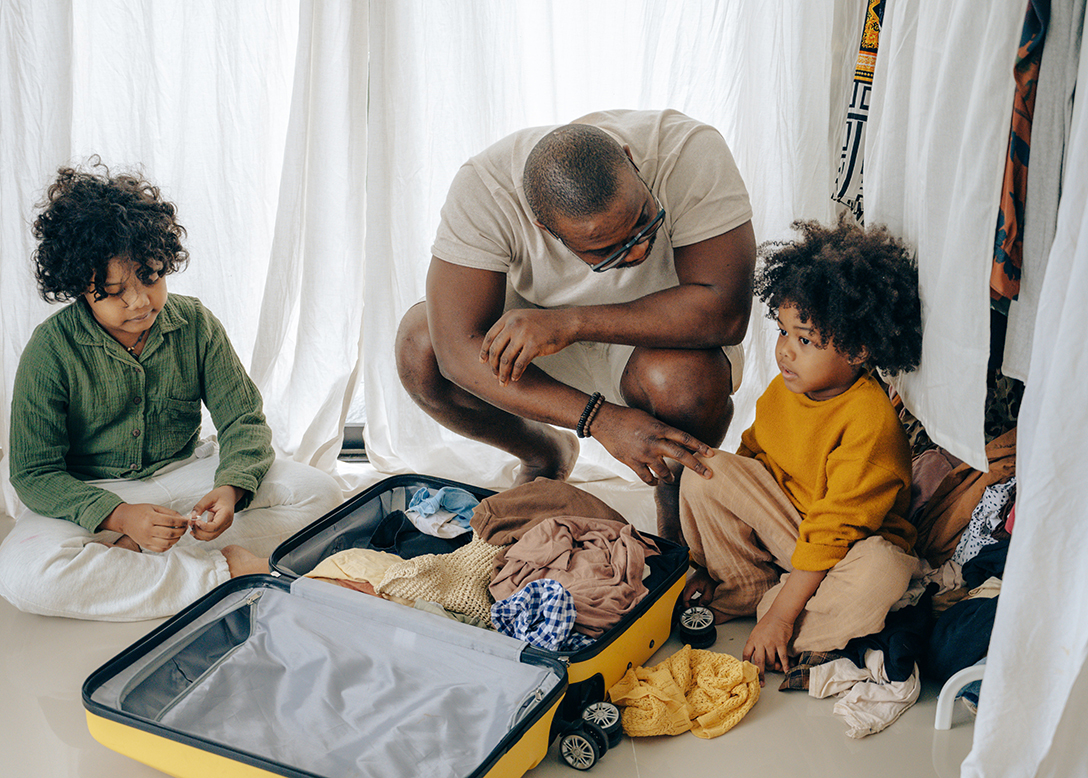by Cady Andersson
There are many conflict resolution processes available today to teach children these important life skills. One process that many early childhood educators preach and teach is Dan Gartrell’s 5-Step Formula for Conflict Resolution. This post presents a quick overview of Gartrell’s process.
Success Step 1 – Calm the Feelings of All Involved
First, you must calm down all people involved in the conflict – including yourself. Research suggests that when your emotional brain is engaged, your logical brain is not functioning – this is why therapists suggest not discussing an issue when you are feeling any emotion besides calm. There will be no resolution if you are dialed up emotionally and your rational brain is offline. This goes for children and adults alike. If you are emotional about an issue with another adult, calming down before discussing the issue is a very important first step.
Research also suggests that a sensory stimulus can help interrupt emotional reactions. There are several different ways to calm and regulate both yourself and the children:
- Count to 10.
- Breathe in and out.
- Name different colors.
- Smell a flower or candle.
- Take a quick walk.

The Calm Down Box. Using sensory input can take children out of a fight, flight, freeze, or fawn panic response and engage them in the here and now. Because sensory stimuli can interrupt emotional storms, classrooms often utilize a tool called “The Calm Down Box” or a “Calm Down Corner.” Children love it, and it teaches self-removal and self-regulation. It may be a challenge to calm down at first – but stick with it until everyone is calm because this is a mandatory first step.
Inside the Calm Down Box are items that engage the sensory brain to interrupt an emotional response. It’s easy to make and inexpensive to assemble by using a simple shoebox filled with items such as Silly Putty®; a tightly sealed (perhaps permanently shut) jar of oil, colored water, and glitter; a squeeze ball; a scented candle; something smooth, soft, scratchy, etc. Then when tempers begin to flare, grab this box and use it to calm down everyone involved in the conflict.
Success Step 2 – Listen to Everyone’s Side of the Story
Once everyone is calm, the next step is to listen to everyone’s side of the story. First, start with the person that you suspect may have been “wronged” in the interaction. It is important that each child knows they are going to have the opportunity to be heard. If you do not announce that you are going to hear what everyone has to say, you will be dealing with a lot of interruptions. I recommend saying something like:
“Okay, now that we are calm, I really want to hear from each of you about what happened. John, I want to hear what you have to say. First, we are going to listen to Nolan, then we will listen to you. Nolan, can you tell us what happened?”
This step is important because it builds empathy, impulse control, and attention span as well as reinforces cause and effect for the children. The children learn that their actions affect others. They have to listen firsthand to how their behavior has made someone else feel. This is an invaluable part of the process. If one child continually attempts to interrupt, continue to reassure the child that you are going to listen to them next:
“I really want to hear what you have to say. Right now we are listening to Nolan.”
Then you must actually listen to Nolan’s perspective on the situation. I say “actually listen” because often, as caregivers, we do not listen when we believe we already know what happened. Important – Even if you saw part of what happened, you still do not know the child’s perspective on what transpired. This is why you must listen. Children will often tell you what happened using blaming language. We are adults, however, and (now) know that the way to resolve conflict is to not placing blame on either party during this process. If Nolan says, “I had the lion and then John came over and he stole it from me. Then I hit him because he was so mean,” you reflect back:
“So it sounds like you were playing with the lion, and then John came over and started playing with the lion, and that made you sad and you hit him. Is that right?”
Nolan will either confirm or deny your interpretation of the events. If he says it is incorrect, state what he adds without blaming either party. When he does agree, move on to John.
“Okay. Thank you, Nolan. Now we are going to listen to John. John, can you tell us what happened?”
John might say, “Well, I had the lion yesterday and I really wanted the lion today, and then I couldn’t find it. When I finally found it, I saw that Nolan had it and I wanted it, so I took it from him. Then he hit me, and then I pinched him because he hit me.” You would respond with:
“Okay, so you had the lion yesterday and really wanted to play with it today. It was hard to find, and then you saw Nolan with it and took it. Then you were hit, and so you pinched Nolan. Is that right?”
If John does not confirm this, listen and state John’s changes until he does confirm. Once he confirms his side of the story, you then restate the whole problem in very general non-blaming terms. The less you say here the better. I would recommend something such as:
“It sounds like the problem is we have two children who really want to use the same toy.”
Success Step 3 – Let the Children Solve the Problem
Then comes Step 3 – letting the children solve their own problem. Immediately following the previous comment you say:
“What do you think we should do about this?”
And then you must stop talking. Appear to be thinking (counting to 20 in your head) or doing something else non-verbally to maintain your silence and look like you are considering potential solutions. The key is to have the children engage in the problem-solving process of conflict resolution. Even though you may already know a positive solution to the issue, this process is not about you and what you know. It is about giving the children a very particular set of skills.
Usually the first suggestion children arrive at will not be fair or positive. Someone will probably say something like, “Well, I could have it and he could play with someone else.” Here is the beautiful part of the process – most of the time you will not need to offer opinions on the solution. You will repeat the suggestion and ask the other child if that sounds fair. If one child says no, your job is to facilitate further problem solving by the children with a comment such as:
“John doesn’t think that’s fair. What else could we do?”
Then continue to brainstorm, reflect, and check in with the children until they agree on a plan.
It is important to note that the resolution can be something you don’t think is a solid solution. If the children agree on it and it is safe, you have achieved the most important step – allowing children to work through a disagreement.
Imagine John says, “He could have the lion and he has to give me the special rock he found at the park today.” You will reflect John’s suggestion and ask Nolan:
“Does that sound fair to you, Nolan?”
Success Step 4 – Agreement and Implementing a Plan
Nolan may surprise you by saying “Yes.” And if they both agree on this as a solution, you have completed Step 4 – which includes both coming to an agreement and implementing the plan. As an adult you might now be thinking, “That doesn’t make any sense. The right answer is to share or take turns! Why are you being this way?”
There are a couple of important reasons for following the plan the children created. The first and most important is that the children are learning to be active members in the conflict resolution process. They need to practice these skills in low-stakes scenarios so they can become adults who know how to negotiate respectfully and successfully. They need to feel like their contributions to the process are valued and respected so they can become adults who feel they have worthy contributions and ideas.
Another very important, sanity-saving reason to allow children to use a solution they have arrived at themselves is that children are significantly more likely to follow through with the actions required when they came up with the idea. They want to feel as though they chose the solution and the solution wasn’t forced upon them.
Success Step 5 – Assist the Resolution
Finally, Step 5 is to assist the resolution in any way necessary (examples include setting a timer, acquiring supplies needed, watching and helping the children follow through). Gartrell also suggests following up with a guidance talk for either or both children later. If finding a separate time to sit down and discuss what happened and what could be done in the future to avoid a conflict like this again sounds like a challenge, try mentioning potential future solutions as the current conflict resolution process winds down. Consider saying something like:
“Okay, so Nolan will play with the lion and John can have Nolan’s special rock. Next time, let’s use our words before we use our bodies. We need to keep each other safe.”
Becoming a Cheerleader Instead of a Coach
The good news is that as you begin this process with your child, they will internalize it and begin to take over. You will start as a coach and become a cheerleader. In the beginning you will be a heavy participant in the process. You will give the children most of the words for the process and lead them through each step. As you continue to use this conflict resolution tool, you will notice that your children begin to start the process without you present. From there, you will need to observe from nearby without becoming involved until you deem it necessary. Here again, push the pause button. Choosing not to immediately step in to help solve a problem is a great challenge of your own impulse control.
Once children have some of these skills, it is imperative that you give them the space to utilize them without your intervention. It is what we encourage everyone to do when they want to get better at a skill they weren’t born with – practice! You wouldn’t run the bases for a child after they hit a fair ball during a game. Consequently, you must also give the children opportunities to practice these skills. If the children need help, be like a coach at first or third base, waving them forward or reminding them to slow down. Or be the coach giving advice on which base they should touch next (any adult who has watched a child’s sports game will know that there is much reminding needed about the basic premise of the game, and this analogy isn’t as much of a stretch as it sounds). Children’s skills – just like we adults – improve with practice. We must let them.
Guiding Kids Toward a Lifetime of Success
Children taking ownership over the conflict resolution process is one of the most magical things that happens in the classroom. As the school year moves forward, children begin to start and complete the conflict resolution process without the assistance of an adult. By the end of the year the children can then master working through conflicts with minimal adult intervention:
“I noticed when you two wanted the same toy, you were able to both calm down and listen to each other’s side of the story. You two really know what to do when a disagreement starts! Now let’s think of solutions together!”
You might be thinking your children are too young to manage conflict on their own. As an educator who has taught children as young as age 2, I can assure you that a child is never too young to hear and engage in the steps of this process. Even if your child is non-verbal and in a conflict, you can still teach them to calm down. You can still ask them how they are feeling or to share their feelings with the other child:
“Michael is sad that you took his ball. Do you want to play with the ball too? It seems like we have two children who want to use the same toy. I wonder what we could do about that.”
Pretend to think for 5 seconds, then say:
“Hey! What if we play a game where both of you can use the ball together. Does that sound fair?”
By starting to teach this 5-step conflict resolution process early, you will do less work later. More importantly, you will guide the children in your care toward a lifetime of success. Why not start now?
________________________
For Further Reading
Books by Dan Gartrell. . .
Guidance for Every Child: Teaching Young Children to Manage Conflict
The Power of Guidance: Teaching Social-Emotional Skills in Early Childhood Classrooms
________________________
Photo courtesy of CottonBro at pexels.com


